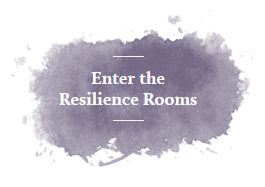In my practice I am seeing a flurry of more youth, as well as adults, with untreated and misdiagnosed anxiety. Over the long-term, the results of this can be devastating. Just this past week, I met with a young father who recalled secretly exhibiting obsessive-compulsive behaviors as a child. His present symptoms have intensified and he currently self-medicates with alcohol and weed to avoid his racing mind. I also met with an adolescent girl who was distressed because she procrastinates working on and completing her school work and avoids new friendships because of fear of failure and rejection. All too often I see untreated and misdiagnosed anxiety leading to depression, missed opportunities in career and relationships, increased substance use, and a decreased quality of life.
Anxiety disorders are the most common mental illness in the U.S., affecting 40 million adults in the United States age 18 and older, or 18 percent of the population (NIH, 2017). It also affects one in eight children and upwards of 20 percent of children and adolescents over their lifespan (ADAA, 2017). Research shows that untreated children with anxiety disorders are at higher risk to perform poorly in school, miss out on important social experiences, and engage in substance abuse (NIH, 2017).
Because anxiety disorders also often co-occurs with other disorders such as depression, eating disorders, and attention-deficit/hyperactivity disorder (ADHD), it sometimes makes diagnosing youth complicated and confusing. It’s important to have a skilled diagnostician to properly evaluate youth and avoid misdiagnosing or overlooking anxiety which can negatively affect their treatment and prognosis.
Anxious youth are often intelligent, quiet and well behaved, and thus frequently don’t get flagged as anxious by their parents, teachers, and others they interact with. They tend to become masterful at overcompensating. They hold their anxiety secretive or deny it, and/or find calculated ways to avoid or distract from it. The feelings of hopelessness and shame are often so pronounced that the idea of “facing” themselves doesn’t even present as a viable option.
Alternatively, others who are overtly disruptive and act out, in part because of their anxiety, are easily labeled as having a conduct disorder, ADHD or just being a “troubled” kid. Because of a failure in evaluating or understanding what is at the root of and is negatively impacting the child’s behavior, we seek to “fix” the behavior/kid. The factors that are directly causing or influencing the behavior are sadly being overlooked. In either scenario youth slip through the cracks or get misunderstood and often fail to receive the help they desperately need.
Parents often say that from a very young age, they knew there was something different about their child, but, they thought their child was generally okay; that they themselves exhibited similar anxious behaviors and that they are fine; they thought their child would “grow out of it”; that they just accepted that’s the way their child is, and/or that they just didn’t quite know what to do about it.
Parents never expect or want their child to become more debilitated over time. Often, parents of anxious children and teens are often confused about what to do, and may additionally feel helpless, frustrated, and overwhelmed. This occurs especially if there are other siblings in the household, when parents are inundated with numerous responsibilities and/or there are a cluster of stressors.
Some symptoms and behaviors parents report include that their child: is clingy, cries easily and/or tantrums when they separate, has difficulty with transitions, exhibits excessive shyness, avoids social situations, socially isolates, is overly preoccupied with technology and or video games, constantly worries, overthinks things, avoids situations or places because of fears, frequently complains of stomachaches, headaches and/or difficulty sleeping, experiences sudden and frequent panic attacks, and/or engages in ritualistic behaviors, etc.
Anxiety differs from person to person based on the child or teens developmental level, the level of intensity of the anxiety, and how the anxiety manifests itself. It generally impacts in the following ways: (a) Emotionally and physically (e.g., rapid heart rate, heaviness in the chest, shaking, sweating, etc.); (b) Behaviorally (e.g., avoiding, seeking reassurance, etc.); (c) Cognitively (e.g., worrisome thoughts, racing thoughts, looping thoughts, etc.); (d) Dependence (e.g., relying too heavily on parents, friends, etc.), and (e) Functioning (e.g., compromised academically, limits or avoids social interactions, etc.).
Parents play an essential role in helping their child or teen manage anxiety. Some tips on helping kids include:
Be careful about modeling behavior. Be cautious about the way you act and react when you are faced with your own anxiety or worries. Kids pick up on cues which can exacerbate their own fears. Be cognizant of reinforcing self-soothing, personal reassurance, and self-monitoring accomplishments.
It is important for parents to work collaboratively and have a consistent way of managing their child’s anxiety. It is very important that one parent not be “too easy” because the other parent “pushes too much.” Family dynamics can play out and may thwart progress and present as confusing to kids.
Encourage exercise, healthy nutrition, good sleep hygiene, and mindfulness. Practice mindfulness, meditation and stress management/relaxation exercises with your child. I highly recommend Transcendental Meditation (TM), the apps “Insight Timer,” “Take a Chill,” and “Stop, Breathe, and Think,” 10 teen meditations at: http://www.doyouyoga.com/10-cool-meditations-for-pre-teens-and-teens-67578/ and the book “The Mindful Teen” by Dr. Dzung X. Vo.
Don’t talk kids out of their thoughts and feelings. Don’t dismiss their concerns by saying, “You have nothing to be scared or worried about”, “Just don’t think about it”, etc. If they’re scared they can’t internalize those sentiments and explanations and often just feel misunderstood and dismissed. Ask kids about details of their fears and be there to respond to their questions and support them through their fears. Express to them that they are not their anxiety. Their anxiety doesn’t rule or define them. They get to define themselves. They also get to manage and rule their own life and can have the thoughts and feelings and act and react based on their values and what is meaningful to them.
Give kids an education on why worrying is useful, helpful and typical. Inform them that everyone experiences anxiety from time to time. It alerts us to threats, protects us from danger and helps us reach important goals. For example, it is normal to feel anxious when encountering a bear while camping, playing in a big game, or before taking an important exam. Although anxiety feels uncomfortable, it’s usually not dangerous. It is temporary and will eventually decrease. Anxiety is normal and part of our body’s natural response mechanism. Our body is smart enough to know when to “amp it up” and when to “calm itself down.”


